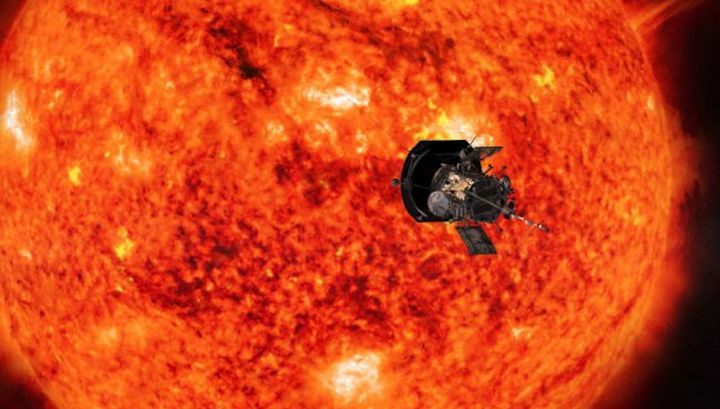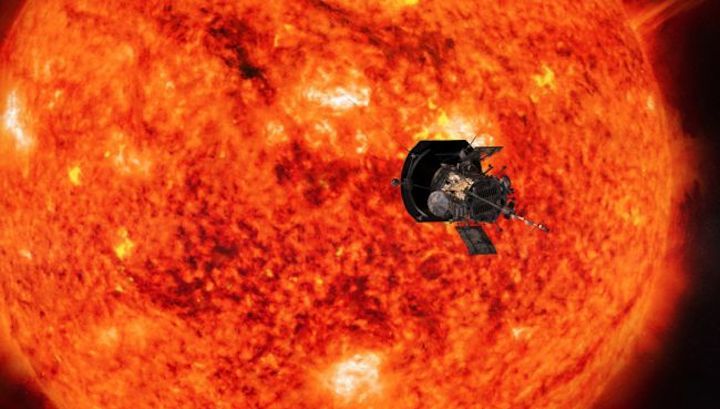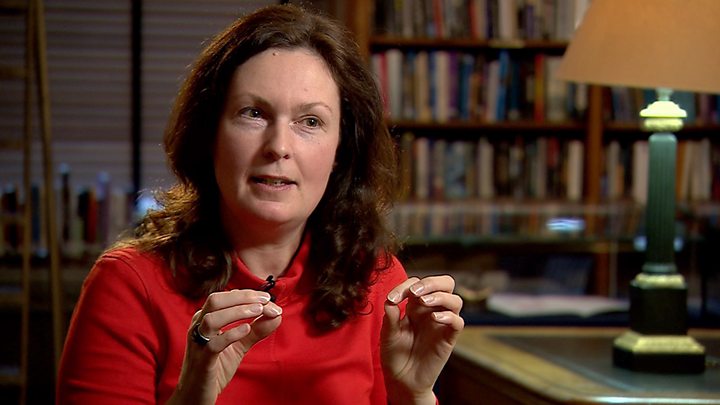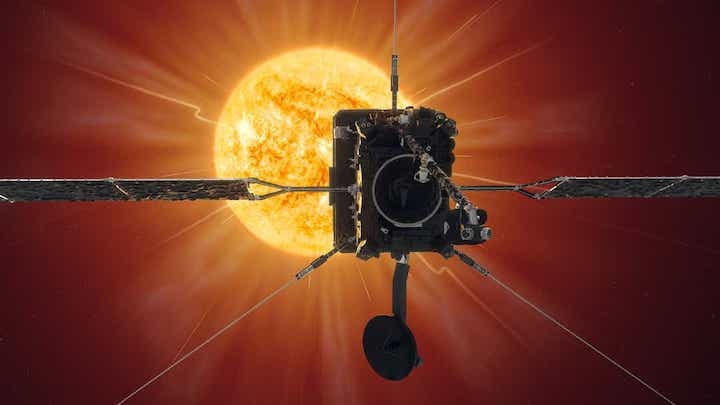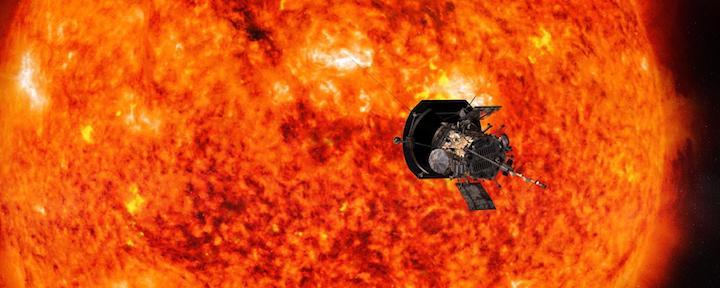Researchers from the Laboratory for Atmospheric and Space Physics (LASP) at the University of Colorado Boulder are diving into the dusty environment that surrounds the sun—a search that could help to reveal how planets like Earth come into being.
The pursuit comes by way of NASA’s Parker Solar Probe—a pioneering mission that has taken scientists closer to Earth’s home star than any spacecraft to date. Over two years, the probe has circled the sun six times, hitting maximum speeds of roughly 290,000 miles per hour.
In the process, the Parker team has learned a lot about the microscopic grains of dust that lie just beyond the sun’s atmosphere, said David Malaspina, a space plasma physicist at LASP. In new research, for example, he and his colleagues discovered that the densities of these bits of rock and ice seem to vary wildly over the span of months—not something scientists were expecting.
“Every time we go into a new orbit, and we think we understand what we’re seeing around the sun, nature goes and surprises us,” said Malaspina, also an assistant professor in the Department of Astrophysical and Planetary Sciences.
He presented the group’s results this week at the 2020 virtual fall meeting of the American Geophysical Union (AGU).
Malaspina said that dust can give researchers an unexpected, and tiny, window into the processes that formed Earth and its neighboring planets more than 4.5 billion years ago.
“By learning how our star processes dust, we can extrapolate that to other solar systems to learn more about planet formation and how a cloud of dust becomes a solar system,” he said.
Solar Dyson
The area just around the sun, a hot and radiation-rich environment, is often dustier than you might imagine, Malaspina said. It contains more grains of dust by volume than most other open expanses of space in the solar system. That’s because the star, through gravity and other forces, pulls dust toward it from millions to billions of miles away, a bit like a vacuum cleaner.
But this vacuum cleaner is imperfect. As dust particles get closer to the sun, its radiation pushes on them more and more—some of those grains of dust will begin to blow in the other direction and can even fly out of the solar system entirely. The Wide-Field Imager for Parker Solar Probe (WISPR) instrument suite onboard the spacecraft found the first evidence for the existence of this dust-devoid region, known as the dust-free zone, more than 90 years after it was predicted.
“What you get is this really interesting environment where all of these particles are moving inward, but once they reach the near-sun environment, they can be blown away,” Malaspina said.
Since launching in 2018, Parker Solar Probe—built and operated by the Johns Hopkins Applied Physics Laboratory, which also leads the mission for NASA—has flown to within about 11.6 million miles of the Sun’s surface.
On each of Parker’s orbits around the sun, the spacecraft collided with thousands of grains of dust. Many of these particles vaporize on the spot, creating a small burst of charged particles that the probe can detect using the five antennae that are part of its FIELDS Experiment. LASP plays an important role in this experiment, which is led by the University of California, Berkeley. Think of it like studying insect populations by counting the splatters on your car’s windshield.
“You get a small puff of plasma,” Malaspina said. “By looking at these spikes, we can understand how many dust impacts we’re getting hit by.”
New mysteries
Malaspina and his colleagues were originally hoping to use those puffs to pinpoint where exactly the solar system’s inward-flying dust becomes outward-flying dust. But they stumbled on something puzzling in the process: The concentrations of dust that the team recorded seemed to vary by as much as 50% between Parker’s six orbits around the Sun.
“That’s really interesting because the timescale that it takes for dust to move in toward the Sun is thousands to millions of years,” Malaspina said. “So how do we get variation in just three or four months?”
This dusty environment, in other words, may be a lot more complicated and fast-shifting than scientists previously thought. Malaspina said that the team will need to wait for Parker to complete more orbits to know exactly what’s happening. He’s just excited to be part of this once-in-a-lifetime chance to run a finger along the Sun’s dusty shelves.
“This is the only in-situ measurement we are going to get for a long time in the inner solar system,” Malaspina said. “We’re trying to make the best of it and learn as much as we can.”
Quelle: University of Colorado Boulder
----
Update: 26.02.2021
.
Parker Solar Probe Offers Stunning View of Venus
NASA’s Parker Solar Probe captured stunning views of Venus during its close flyby of the planet in July 2020.
Though Parker Solar Probe’s focus is the Sun, Venus plays a critical role in the mission: The spacecraft whips by Venus a total of seven times over the course of its seven-year mission, using the planet’s gravity to bend the spacecraft’s orbit. These Venus gravity assists allow Parker Solar Probe to fly closer and closer to the Sun on its mission to study the dynamics of the solar wind close to its source.
But — along with the orbital dynamics — these passes can also yield some unique and even unexpected views of the inner solar system. During the mission’s third Venus gravity assist on July 11, 2020, the onboard Wide-field Imager for Parker Solar Probe, or WISPR, captured a striking image of the planet’s nightside from 7,693 miles away.
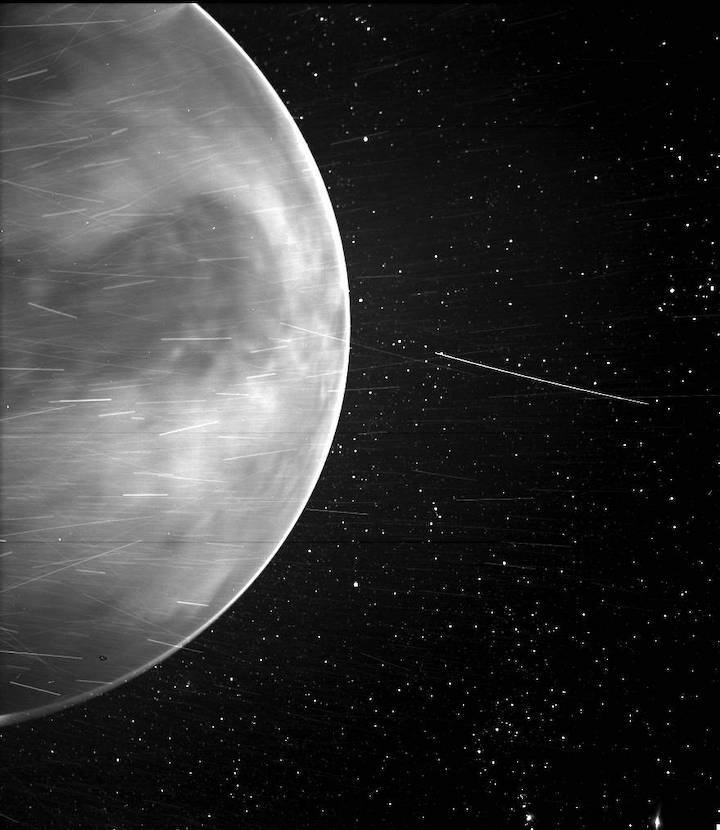
WISPR is designed to take images of the solar corona and inner heliosphere in visible light, as well as images of the solar wind and its structures as they approach and fly by the spacecraft. At Venus, the camera detected a bright rim around the edge of the planet that may be nightglow — light emitted by oxygen atoms high in the atmosphere that recombine into molecules in the nightside. The prominent dark feature in the center of the image is Aphrodite Terra, the largest highland region on the Venusian surface. The feature appears dark because of its lower temperature, about 85 degrees Fahrenheit (30 degrees Celsius) cooler than its surroundings.
That aspect of the image took the team by surprise, said Angelos Vourlidas, the WISPR project scientist from the Johns Hopkins Applied Physics Laboratory (APL) in Laurel, Maryland, who coordinated a WISPR imaging campaign with Japan’s Venus-orbiting Akatsuki mission. “WISPR is tailored and tested for visible light observations. We expected to see clouds, but the camera peered right through to the surface.”
“WISPR effectively captured the thermal emission of the Venusian surface,” said Brian Wood, an astrophysicist and WISPR team member from the U.S. Naval Research Laboratory in Washington, D.C. “It’s very similar to images acquired by the Akatsuki spacecraft at near-infrared wavelengths.”
This surprising observation sent the WISPR team back to the lab to measure the instrument’s sensitivity to infrared light. If WISPR can indeed pick up near-infrared wavelengths of light, the unforeseen capability would provide new opportunities to study dust around the Sun and in the inner solar system. If it can’t pick up extra infrared wavelengths, then these images — showing signatures of features on Venus’ surface — may have revealed a previously unknown “window” through the Venusian atmosphere.
“Either way,” Vourlidas said, “some exciting science opportunities await us.”
For more insight into the July 2020 images, the WISPR team planned a set of similar observations of the Venusian nightside during Parker Solar Probe’s latest Venus flyby on Feb. 20, 2021. Mission team scientists expect to receive and process that data for analysis by the end of April.
“We are really looking forward to these new images,” said Javier Peralta, a planetary scientist from the Akatsuki team, who first suggested a Parker Solar Probe campaign with Akatsuki, which has been in orbiting Venus since 2015. “If WISPR can sense the thermal emission from the surface of Venus and nightglow — most likely from oxygen — at the limb of the planet, it can make valuable contributions to studies of the Venusian surface.”
Parker Solar Probe is part of NASA’s Living with a Star program to explore aspects of the Sun-Earth system that directly affect life and society. The Living with a Star program is managed by the agency’s Goddard Space Flight Center in Greenbelt, Maryland, for NASA’s Science Mission Directorate in Washington. Johns Hopkins APL designed, built and operates the spacecraft.
Quelle: NASA
----
Update: 7.03.2021
.
Observations Around Solar System With Parker Solar Probe’s 7th Solar Encounter
During Parker Solar Probe’s seventh swing by the Sun, culminating in its closest solar approach, or perihelion, on Jan. 17, 2021, celestial geometry posed a special opportunity. The configuration of this particular orbit placed Parker Solar Probe on the same side of the Sun as Earth — meaning that Earth-bound observatories could observe the Sun and its outpouring of solar wind from the same perspective as Parker’s. This comes on the heels of a similar observation campaign in the winter of 2020.
“Along with the global science community, the Parker Solar Probe team can’t wait to see this new data,” said Nour Raouafi, the Parker Solar Probe project scientist from the Johns Hopkins Applied Physics Laboratory in Laurel, Maryland. “Combining it with contributions from observatories around the globe will help us to put Parker observations in a broader context and build a complete picture of the phenomena observed in the solar atmosphere.”
Read on for snapshots from a few missions that observed the Sun and the solar system during Parker Solar Probe’s seventh solar encounter.
Hinode
These images were captured by the X-ray Telescope, or XRT, aboard the Japan Aerospace Exploration Agency’s and NASA’s Hinode spacecraft. XRT watches the Sun in X-rays, a high-energy type of light that reveals the extremely hot material in the Sun’s atmosphere, the corona. These images from XRT were captured on Jan. 17, when Parker Solar Probe was closest to the Sun. Scientists can use XRT’s images with Parker Solar Probe’s direct measurements of the environment around the Sun to better understand how the Sun’s corona could drive changes in the space environment farther away from the Sun.
Solar Dynamics Observatory
NASA’s Solar Dynamics Observatory, or SDO, keeps a constant eye on the Sun from its vantage point in orbit around Earth. SDO captures images of the Sun in extreme ultraviolet light — a type of light that is invisible to our eyes — and visible light, as well as magnetic maps of the Sun. SDO’s data can help scientists understand the connection between conditions on the Sun and what is measured in the solar wind by spacecraft like Parker Solar Probe.
These images were captured in 211 angstroms, a wavelength of extreme ultraviolet light emitted by material at around 3 million degrees Fahrenheit. This wavelength highlights both active regions — seen as bright spots in the image — and coronal holes, areas of open magnetic field on the Sun from which high-seed solar wind can rush out into space. Coronal holes appear as dark areas in this wavelength of light.
IRIS
NASA’s Interface Region Imaging Spectrograph, or IRIS, captures images of the lower regions of the Sun’s atmosphere in ultraviolet light, along with spectra that break down how much light is visible across different wavelengths. These images, captured on Jan. 17, show an active region on the Sun, an area of intense and complex magnetic fields that is prone to explosions of light and solar material. This particular active region was targeted for IRIS observations based on model predictions that suggested that magnetic field lines from this region could be ones Parker Solar Probe would cross and measure during its solar encounter.
The images cycle through different wavelengths of light — corresponding to views of different heights above the solar surface — to reveal features in various regions of the Sun’s structure. This imagery shows features from the solar surface to a few thousand miles above at the top of the chromosphere, a region of the Sun’s atmosphere that interfaces with the extended solar atmosphere beyond.
GONG
The National Science Foundation’s Global Oscillation Network Group, or GONG, is a network of solar imagers distributed around the globe. They make use of the Zeeman effect — how light splits into multiple wavelengths under the influence of a magnetic field — to create magnetic maps of the solar surface. This video shows GONG’s magnetic maps, updated hourly, from Jan. 12-23, 2021. The black areas represent areas where the magnetic field is pointing in towards the Sun’s surface, and white areas are where the magnetic field is pointing out into space.
As the solar wind streams out from the Sun, it carries the solar magnetic field with it. But identifying precisely which regions on the Sun are the source for solar wind measured by spacecraft like Parker Solar Probe is a challenging task for several reasons: The Sun rotates, solar wind leaves the Sun at varying speeds, and strong magnetic fields near the Sun can change the solar wind’s path as it flows out.
The Parker Solar Probe team uses GONG’s magnetic maps, along with data from NASA’s Solar Dynamics Observatory, to make predictions of which regions on the Sun are sending out material and magnetic field lines toward the spacecraft. Drawing these connections between the Sun itself and the solar wind that Parker Solar Probe is measuring directly can help scientists trace how conditions on the Sun propagate out into space.
THEMIS
A trio of NASA’s THEMIS spacecraft — short for Time History of Events and Macroscale Interactions during Substorms — orbit Earth to measure particles and electric and magnetic fields in near-Earth space. THEMIS’ data helps researchers untangle the complicated factors that govern the response of near-Earth space to dynamics in Earth’s magnetic field, changes in the Sun’s constantly outflowing solar wind, and activity on the Sun.
These measurements were taken by THEMIS-E, one of the spacecraft in orbit around Earth, on Jan. 20. It takes about two to three days for solar wind to cross the tens of millions of miles from the Sun to Earth, so the solar wind conditions observed by Parker Solar Probe during its close solar approach on Jan. 17 did not begin to influence near-Earth space until about Jan. 19-20.
THEMIS-E began the day traveling through the Van Allen radiation belts — concentric bands of charged particles nested in Earth’s magnetic field — as it approached Earth. THEMIS-E then traveled back outward through the radiation belts. Both transits through the radiation belts are reflected in the areas of intense coloring in the lower left part of the plot at the beginning of the day.
Mid-morning, THEMIS-E left Earth’s magnetic field and entered the magnetosheath — the region just outside the outermost Sun-facing boundary of Earth’s magnetic field where solar wind piles up as it collides with Earth’s magnetic field. Throughout the day, gusts in the solar wind temporarily pushed the boundaries of the magnetosphere Earthward, meaning that THEMIS-E repeatedly left and re-entered the magnetosheath. For about 15 hours — until its orbit carried it back into the magnetosphere late in the day — THEMIS-E alternately observed the unperturbed solar wind outside the magnetosheath and piled-up solar wind in the magnetosheath. The undisturbed solar wind observed by THEMIS-E was a bit slower than usual, but also about twice as dense as typical solar wind — observations also confirmed by NASA’s Advanced Composition Explorer and Wind spacecraft, which orbit further upstream between the Sun and Earth.
Quelle: NASA
----
Update: 7.05.2021
.
During a brief swing by Venus, NASA’s Parker Solar Probe detected a natural radio signal that revealed the spacecraft had flown through the planet’s upper atmosphere. This was the first direct measurement of the Venusian atmosphere in nearly 30 years — and it looks quite different from Venus past. A study published today confirms that Venus’ upper atmosphere undergoes puzzling changes over a solar cycle, the Sun’s 11-year activity cycle. This marks the latest clue to untangling how and why Venus and Earth are so different.
Born of similar processes, Earth and Venus are twins: both rocky, and of similar size and structure. But their paths diverged from birth. Venus lacks a magnetic field, and its surface broils at temperatures hot enough to melt lead. At most, spacecraft have only ever survived a couple hours there. Studying Venus, inhospitable as it is, helps scientists understand how these twins have evolved, and what makes Earth-like planets habitable or not.
On July 11, 2020, Parker Solar Probe swung by Venus in its third flyby. Each flyby is designed to leverage the planet’s gravity to fly the spacecraft closer and closer to the Sun. The mission — managed by Johns Hopkins Applied Physics Laboratory in Laurel, Maryland — made its closest flyby of Venus yet, passing just 517 miles (833 km) above the surface.
“I was just so excited to have new data from Venus,” said Glyn Collinson of NASA’s Goddard Space Flight Center in Greenbelt, Maryland, the lead scientist on the study, published today in Geophysical Research Letters. A Venus expert, Collinson has pored over all the Venus data available — from past missions like NASA’s Pioneer Venus Orbiter and ESA’s (the European Space Agency) Venus Express — several times.
One of Parker Solar Probe’s instruments is FIELDS, named for the electric and magnetic fields it measures in the Sun’s atmosphere. For just seven minutes — when Parker Solar Probe was closest to Venus — FIELDS detected a natural, low-frequency radio signal. The thin frown in the data caught Collinson’s attention. The shape and strength of the signal seemed familiar, but he could not place it. “Then the next day, I woke up,” he said. “And I thought, ‘Oh my god, I know what this is!’”
Collinson recognized the signal from his previous work with NASA’s Galileo orbiter, which explored Jupiter and its moons before the mission ended in 2003. A similar frown appeared whenever the spacecraft passed through the ionospheres of Jupiter’s moons.
Like Earth, Venus sports an electrically charged layer of gas at the upper edge of its atmosphere, called the ionosphere. This sea of charged gases, or plasma, naturally emits radio waves that can be detected by instruments like FIELDS. When Collinson and his team identified that signal, they realized Parker Solar Probe had skimmed Venus’ upper atmosphere — a pleasant surprise, though one they might have expected based on previous data, he said.
The researchers used this radio emission to calculate the density of the ionosphere that Parker Solar Probe flew through. Researchers last obtained direct measurements of Venus’ ionosphere from Pioneer Venus Orbiter in 1992. Then, the Sun was near solar maximum, the stormy peak of the solar cycle.
In the years that followed, data from ground-based telescopes suggested big changes were taking place as the Sun settled into its calm phase, solar minimum. While the bulk of the atmosphere remained the same, the ionosphere — which is at the top, where gases can escape to space — was much thinner during solar minimum.
Without direct measurements, it was impossible to confirm.
The observations from Parker Solar Probe’s recent flyby, which occurred six months after the latest solar minimum, verify the puzzle in Venus’ ionosphere. Indeed, Venus’ ionosphere is much thinner compared to previous measurements taken during solar maximum.
“When multiple missions are confirming the same result, one after the other, that gives you a lot of confidence that the thinning is real,” said Robin Ramstad, a study co-author and post-doctoral researcher at the Laboratory of Atmospheric and Space Physics at the University of Colorado, Boulder.
Understanding why Venus’ ionosphere thins near solar minimum is one part of unraveling how Venus responds to the Sun — which will help researchers determine how Venus, once so similar to Earth, became the world of scorching, toxic air it is today. For example, Venus’ ionosphere is prone to leaking, meaning the escape of energized gases into space. Gathering data on this and other changes in the ionosphere is key to understanding how Venus’ atmosphere has evolved over time.
This study was some 30 years in the making. It took a mission to Venus, and decades later, a state-of-the-art mission to the Sun. “The goal of flying by Venus is to slow down the spacecraft so that Parker Solar Probe can dive closer to the Sun,” said Nour E. Raouafi, Parker Solar Probe project scientist at the Applied Physics Laboratory. “But we would not miss the opportunity to gather science data and provide unique insights into a mysterious planet such as Venus.”
Collinson likened the research to hitchhiking. Venus scientists were eager to piggyback off Parker Solar Probe’s flyby for new data and views of Earth’s twin planet. “To see Venus now, it’s all about these little glimpses,” he said.
Quelle: NASA

